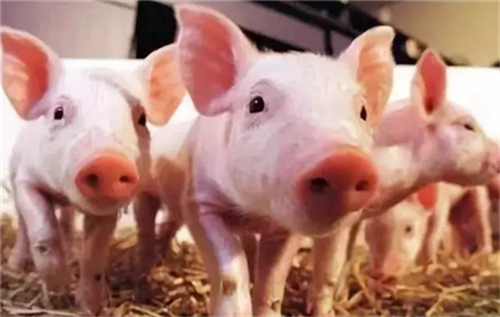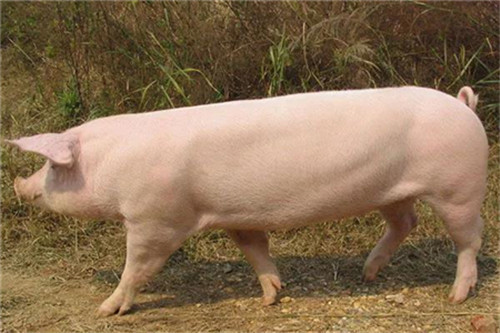Clinical diagnosis, prevention and treatment of porcine mycoplasma pneumonia (porcine asthma)
Porcine asthma, also known as porcine asthma and porcine mycoplasma pneumonia, is a contagious, chronic and consumptive respiratory infectious disease in pigs caused by Mycoplasma hyopneumoniae. Most of the diseased pigs suffering from the disease are characterized by loss of appetite resulting in low feed utilization rate and prolonged fattening period, which will slow down their growth rate. The incubation period of porcine asthma is longer, and most pigs have no obvious symptoms after being infected with the disease, so pigs are more susceptible to infection.
I. popular characteristics
Porcine asthma is the most common disease in young pigs and suckling piglets, while adult pigs, lactating sows and pregnant reserve sows show more recessive infection. In the old epidemic areas, the mortality rate is lower, this is because in the old epidemic areas, the symptoms of pigs are not obvious, and it belongs to a chronic process. In the new epidemic area, the transmission rate and mortality rate of the disease are higher, and it is more prevalent in the way of an outbreak. Healthy pigs are infected through the respiratory tract when exposed to feed or utensils that have been contaminated with pathogens.
Second, clinical symptoms
At the beginning, the main manifestation of porcine asthma is monophonic cough, and there is no obvious change in appetite and spirit. The onset of piglets will lead to growth retardation and dysplasia. With the further development of the disease, dispirited pigs develop symptoms of lethargy and worsening cough, especially coughing, which will change from light cough to deep cough and from dry cough to wet cough. the breathing of sick pigs will be extremely difficult and the frequency of breathing will increase. In the later stage of the development of the disease, it becomes open mouth breathing, loss of appetite or not eating. In later development, the body temperature will gradually rise and even suffocate to death due to exhaustion.

III. Pathological changes
Two manifestations of edema and emphysema were found in the lungs of dead pigs, and "shrimp-like" lesions occurred in the heart lobe, intermediate lobe, apical lobe and anterior edge of the diaphragmatic lobe. With the aggravation of the disease, the pig lung lobe will show different conditions, in which the boundary between normal lung tissue and mutation area will be very clear. Therefore, when diagnosing the disease, relevant personnel need to pay attention to the mixed infection caused by porcine pneumoniasis, swine lung disease and swine flu.
IV. Diagnosis
The main results are as follows: (1) the preliminary diagnosis can be made according to the epidemic characteristics, clinical symptoms and pathological changes of autopsy, and the diagnosis needs serological diagnosis or X-ray diagnosis.
(2) differential diagnosis:
① swine influenza is a kind of fulminant disease with rapid transmission, the body temperature of diseased pigs will increase significantly, the epidemic period of porcine asthma is longer, the speed of transmission is slower than swine influenza, and the body temperature of diseased pigs will not increase significantly.
The acute cases of ② pig lung disease mainly showed the symptoms of fibrinous pleurisy and septicemia, and the changes of fibrinous pleurisy and septicemia could be observed by autopsy, and the necrotic focus or suppurative focus could be seen in chronic pigs. On the other hand, there are no significant changes in appetite and body temperature in pigs with asthma, and there are no changes in pleurisy or septicemia, only in their lungs.
5. Treatment plan
30~40mg/ (kg ·bw) oxytetracycline hydrochloride was diluted with 0.25% procaine and injected intramuscularly once a day for 3 days.
VI. Preventive measures
(1) regular ventilation in pig houses according to climate and seasonal changes can effectively reduce ammonia concentration and ensure fresh air in pig houses, thus avoiding respiratory infection. To ensure the balanced and rational nutrition of pigs, it is also necessary to control the temperature of the pigsty and ensure that the temperature difference between morning and evening is in a moderate range through warmth and cold protection. In the breeding process, it is also necessary to reduce the number of mixed groups and hurdles, and the probability of pig asthma can be reduced by creating a clean, comfortable and warm environment.
(2) adhere to the system of self-breeding and full entry and exit, strengthen the sanitary disinfection of pig houses, and add tamoxin to drinking water for pigs for 7 days for 10 days, which can effectively prevent the occurrence of the disease.
(3) vaccination in time.
- Prev

Sow constipation is harmful, the method of relieving constipation soil is rough, but the effect is good.
Sow constipation is harmful, the method of relieving constipation soil is rough, but the effect is good.
- Next

You can't think of the reason why the treatment effect is poor after nursing pig disease.
You can't think of the reason why the treatment effect is poor after nursing pig disease.
Related
- On the eggshell is a badge full of pride. British Poultry Egg Market and Consumer observation
- British study: 72% of Britons are willing to buy native eggs raised by insects
- Guidelines for friendly egg production revised the increase of space in chicken sheds can not be forced to change feathers and lay eggs.
- Risk of delay in customs clearance Australia suspends lobster exports to China
- Pig semen-the Vector of virus Transmission (4)
- Pig semen-the Vector of virus Transmission (3)
- Five common causes of difficult control of classical swine fever in clinic and their countermeasures
- Foot-and-mouth disease is the most effective way to prevent it!
- PED is the number one killer of piglets and has to be guarded against in autumn and winter.
- What is "yellow fat pig"? Have you ever heard the pig collector talk about "yellow fat pig"?

